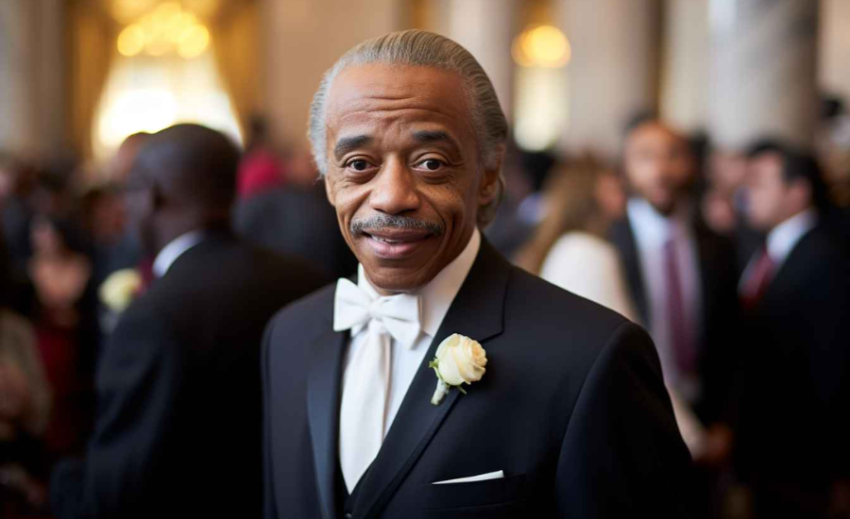American Baptist clergyman, social rights activist, and media personality Al Sharpton is known for his outspoken and controversial fight against racial inequality in the US. His 1971 founding of the National Youth Movement solidified his social activism. Sharpton became a national icon fighting racial prejudice in the 1980s.
Al Sharpton’s Net Worth

Certain claims made against Sharpton during his activism have been proven false. It reminds us of the challenges of social and political activism, where narratives and perceptions can change.
Al Sharpton, an American Baptist clergyman and civil rights activist, hosts television and radio talk shows. His $500 thousand net worth adds to his diverse identity.
Sharpton’s fame goes beyond religion and journalism. He is a notable political activist who fights racial injustice in the US with strong and often confrontational tactics. Outspoken and provocative, he is a significant figure in the social justice movement.
Sharpton’s racial equality activism has garnered praise and condemnation in addition to his spiritual leadership and media work. His path shows the difficulties of balancing religion, media, and social activism for social justice.
Despite his prominent profile, Sharpton’s net worth is simply one aspect of his biography. The larger narrative includes his diligent efforts to address social concerns, initiate conversations, and contribute to racial equity and fairness discourse.
How has Al Sharpton spent his wealth?
Al Sharpton owns other assets in addition to his fine clothes and black gloves. Notably, he has a 1950-built family house in Cullman, Alabama. About $150,000 is the worth of this property. Sharpton may own a $2.1 million Upper East Side condo, according to sources.
Sharpton bought himself a Rolls-Royce Phantom for his 2014 birthday, demonstrating his luxury. At the time of acquisition, the Phantom was the most expensive production automobile in the world, costing $475,000. Sharpton’s choice of car showed his taste and readiness to live a luxurious lifestyle.
These facts highlight Sharpton’s private life, which includes historic homeownership, affluent urban living, and high-end vehicle craftsmanship. It adds layers to the civil rights activist’s public image, showing him enjoying prosperity outside of his public work.
Al Sharpton Alleged Financial Problems
The November 2014 New York Times exposé damaged Sharpton’s finances. The tabloid said Sharpton owed $4.5 million in state and federal taxes. Interestingly, Al Sharpton’s personal tax bills made up $3.7 million of this debt.
Sharpton strongly denied the Times’ assertions. He insisted that the tax liens had been addressed and paid to reduce the financial strain. Sharpton didn’t specify how much debt had been settled. Despite his guarantees, the New York Times could not independently verify his statements.
Sharpton’s personal finances intersect with the public glare in this episode. It highlights the financial issues and scrutiny public figures endure. The conflicting accounts leave opportunity for speculation and emphasise the need for open communication in such topics.
Al Sharpton Early Life
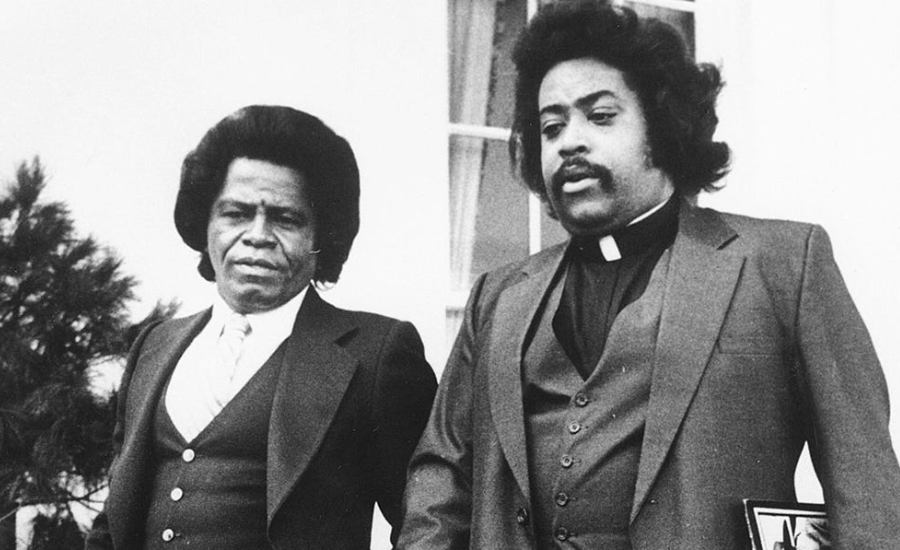
Brooklyn’s dynamic borough welcomed Alfred Charles Sharpton Jr. on October 3, 1954. Ada and Alfred Charles Sharpton Sr. shaped his childhood. After Sharpton’s father left in 1963, his mother had to support the family alone.
The Sharptons qualified for welfare due to financial difficulties. They moved from their middle-class home to Brooklyn’s Brownsville public housing developments due to this change. This period transformed Sharpton’s perspective of socioeconomic differences and fuelled his passion to fight inequity.
Student Sharpton graduated from Samuel J. Tilden High School. Despite attending Brooklyn College for two years, he left to pursue activism and ministry.
At nine or ten, Bishop F.D. Washington licensed and ordained Sharpton as a Pentecostal pastor, changing his spiritual trajectory. The death of Bishop Washington in the late 1980s prompted Sharpton’s conversion to Baptistism. Sharpton’s re-baptism by William Augustus Jones in 1994 confirmed his Baptist ministry.
Sharpton’s faith evolution reflects his personal and spiritual maturation and growing participation with social causes. It shows how personal experiences, faith, and the socio-political milieu have shaped Al Sharpton into a powerful figure.
Wiki/Bio
| Name | Al Sharpton |
| Gendar | Male |
| Date of Birth | October 3, 1954 |
| Birth place | Brownsville |
| Age | 69 years old |
| Zodiac Sign | Libra |
| Schools | Brooklyn College |
| Nationality | American |
| Profession | Politician, Actor, Minister, Presenter |
| Net Worth | $500 Thousand |
Al Sharpton Education
Sharpton’s academic career began at Samuel J. Tilden High School in New York. He transferred to Brooklyn College in New York’s bustling city.
Sharpton undoubtedly had a variety of educational experiences at Samuel J. Tilden High School that shaped his perspective. He may have faced new challenges and chances for personal and intellectual growth at Brooklyn College, a more advanced academic setting.
The move from high school to college typically transforms people, and Sharpton’s did. These scholastic milestones not only record his formal learning journey but also shape his development, affecting his activism, ministry, and public life.
Al Sharpton Career
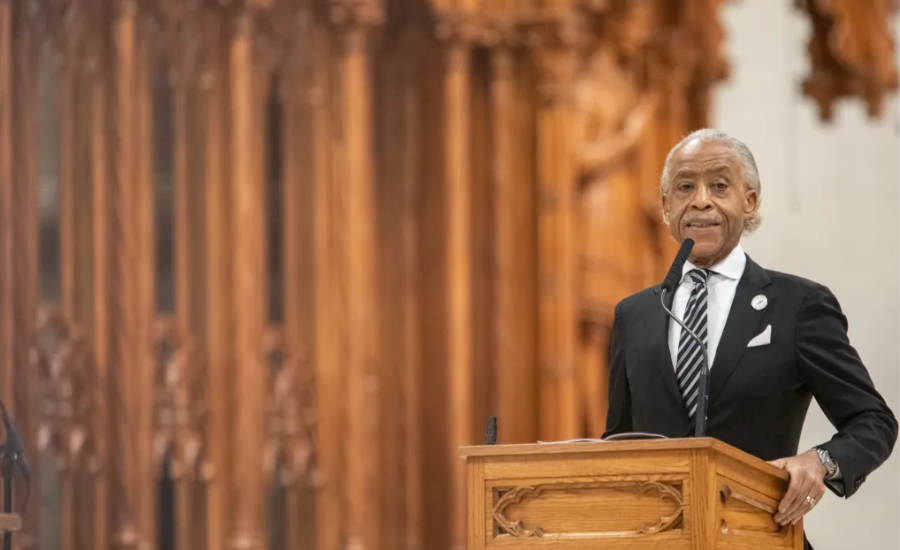
Al Sharpton became Operation Breadbasket’s New York City youth director in 1969 after Jesse Jackson saw his promise. Operation Breadbasket, a sterling group, promoted African American employment. Sharpton’s influential journey began with activism and community empowerment.
Sharpton founded the National Youth Movement in 1971, two years later. This effort raised monies for underprivileged youth, demonstrating Sharpton’s dedication to solving youth socio economic issues. Sharpton became a famous racial justice activist in the 1980s.
However, Sharpton’s activism is contentious.
Tawana Brawley, a teenager, alleged white men abducted and raped her. Unfortunately, further investigations found these assertions to be incorrect, demonstrating the difficulties of handling high-profile cases.
Sharpton has championed Bernhard Goetz, Yusef Hawkins, Amadou Diallo, Trayvon Martin, and Eric Garner. He formed the National Action Network in 1991 to educate voters, encourage small companies, and help the poor.
Al Sharpton led Michael Jackson’s tribute at Harlem’s Apollo Theater in June 2009. Sharpton, a lifetime friend of the Jacksons, called Michael Jackson a “trailblazer” and “historic figure,” underlining his close ties to the Apollo Theater. Sharpton addresses current concerns on TV and radio. Al Sharpton has hosted Radio One’s daily national talk show “Keepin It Real with Al Sharpton” since January 2006. The host of MSNBC’s “PoliticsNation” since 2011, he also appears on “Morning Joe.”
In addition to his radio work, Sharpton has written three books: “Al on America,” “The Rejected Stone: Al Sharpton and the Path to American Leadership,” and “Go and Tell Pharaoh” with Nick Chiles. These writings reveal Sharpton’s views on America, his life, and historical events.
Running For Public Office
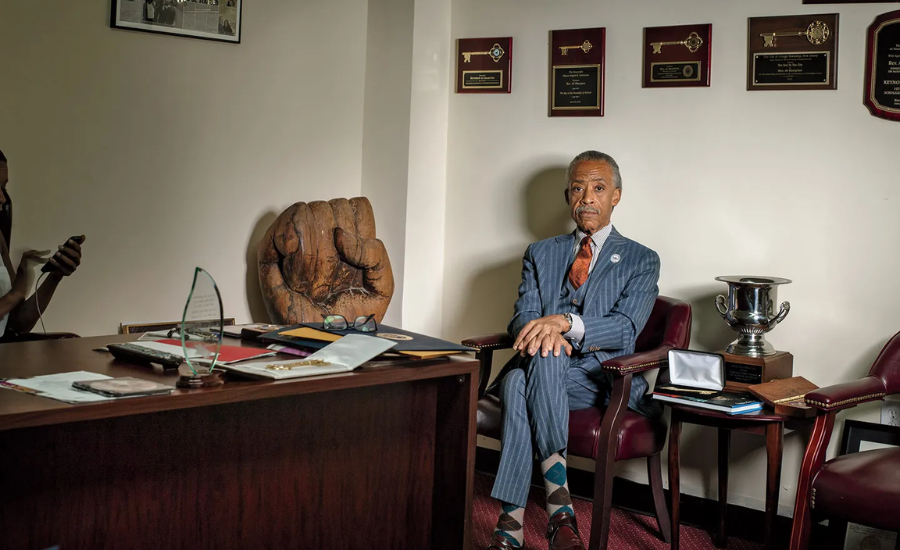
Al Sharpton relentlessly pursued public office in the 1990s, demonstrating his commitment to democracy. Despite losing the 1978 New York State Assembly race, Sharpton pursued national politics. He ran for the Senate in 1992 and 1994, showing his national ambition.
In 1997, Sharpton ran for mayor of New York City, not just the legislature. He entered municipal administration to bring about larger changes in the city that had inspired his advocacy.
His political career peaked in 2004 when Sharpton ran for Democratic Party president. Sharpton became a national figure outside New York with this audacious move. This presidential attempt offered him momentum and visibility, but he didn’t get enough support for the party’s nomination.
Sharpton’s political career mirrors the 1990s and early 2000s American political climate.
It highlights the difficulties of handling national elections and the numerous interactions that determine electoral outcomes. Sharpton’s efforts, albeit inconsistent, contribute to American political history and demonstrate his diverse civic commitment.
Al Sharpton Personal Life
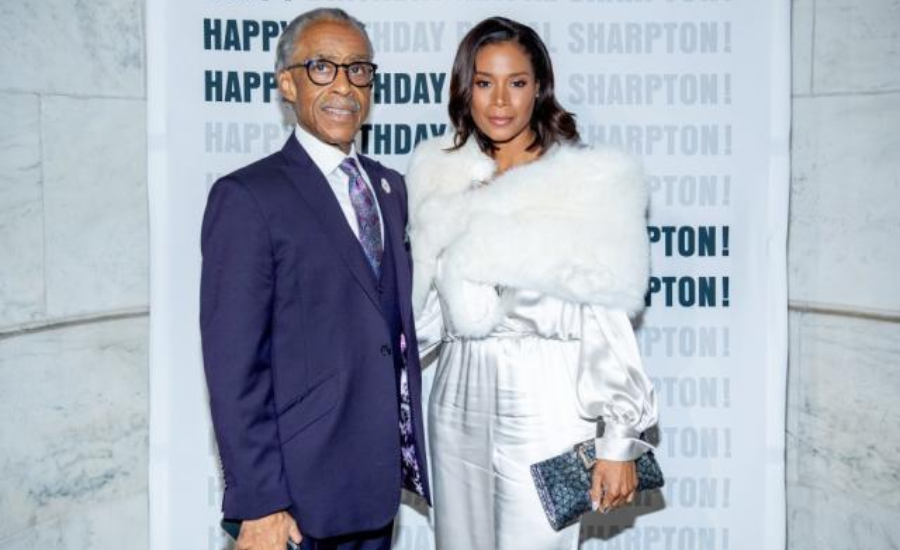
In Al Sharpton’s vivid personal life, important chapters weave into his dynamic career. Sharpton met his future wife, backup vocalist Kathy Jordan, during his 1971 James Brown tour. They married in 1980 as their musical collaboration deepened.
After splitting from Kathy Jordan in 2004, Sharpton’s personal life changed. Sharpton’s romantic life became public after this major occurrence. In July 2013, the New York Daily News revealed Sharpton’s relationship status. He was still married to Marsha Tinsley, his second wife. The media alleged that Sharpton had a 35-year-old “girlfriend,” Aisha McShaw. According to the Daily News, the couple would draw notice at posh parties nationwide. McShaw, a “personal stylist” and “personal banker,” complicated Sharpton’s public image and highlighted the complexities of public connections.
Sharpton’s honorary membership in Phi Beta Sigma shows his dedication to community and fellowship beyond personal matters. Sharpton is recognised in a network that emphasises knowledge, service, and fraternity.
Sharpton’s personal life offers a deeper look into him. The interconnections of love, companionship, and cultural expectations remind us that even public figures navigate personal relationships. Sharpton’s romantic and familial journey illuminates his complex life.
Physical Appearance
| Height | 5’10” |
| Weight | 129 pounds |
| Hair Colour | Brown |
| Eye Colour | Black |
| Sexuality | Straight |
Al Sharpton Weight Loss
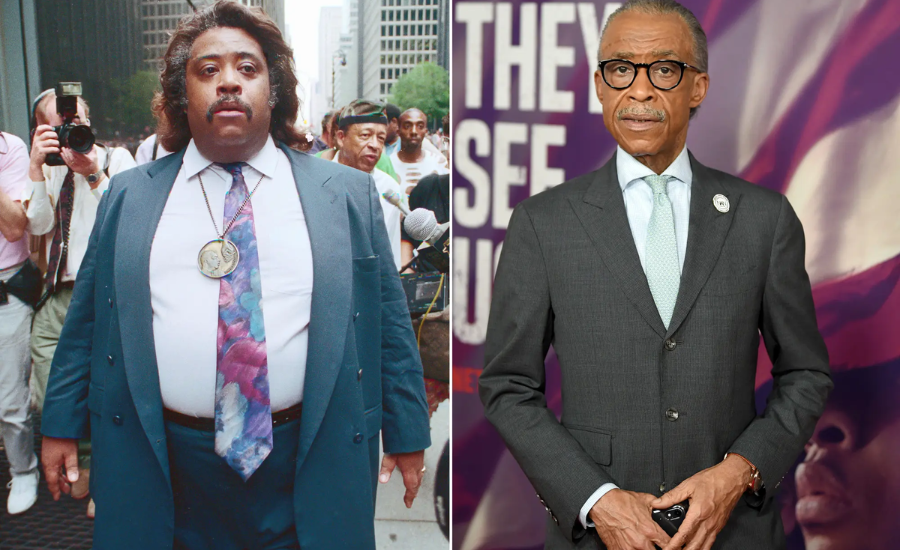
Al Sharpton lost 176 pounds in an incredible four-year weight loss programme that ended in October 2014. Sharpton’s transformation from 305 lbs. to 129 lbs. shows his dedication to health.
How did Sharpton change so drastically? He stresses that he lost weight without surgery, eliminating any illusions of shortcuts. Instead, Sharpton credits his achievement to a strict diet, nutrient-dense food, and regular exercise.
Sharpton’s weight loss journey inspires individuals seeking permanent lifestyle changes and shows his commitment to his health. It emphasises the need of a comprehensive wellness strategy that prioritises balanced nutrition, physical activity, and the resilience to stick to a routine.
Sharpton’s transformation shows that with determination and conscious choices, anyone may make lasting changes in their health and wellness. His quest inspires those seeking a healthier, happier life.
FAQs
Q1. What is Al Sharpton famous for?
A1. Al Sharpton is an American Baptist minister, social activist, and media figure. His loud and controversial campaign against US racial discrimination made him famous.
Q2. How much is Al Sharpton worth?
A2. According to reports, Al Sharpton is worth $500,000. His broad persona includes hosting TV and radio talk shows and campaigning.
Q3. How did Al Sharpton use his money?
A3. Al Sharpton bought a $2.1 million Upper East Side condo and a family home in Cullman, Alabama. He also bought a Rolls-Royce Phantom, demonstrating his luxury tastes.
Q4. Was Al Sharpton financially troubled?
A4. The New York Times revealed that Al Sharpton owed $4.5 million in state and federal taxes in November 2014. Sharpton said the tax liens were settled to ease financial burden.
Q5. How did Al Sharpton’s childhood affect his activism?
A5. Al Sharpton’s early background in Brooklyn public housing and financial struggles affected his views on socioeconomic inequalities. These events inspired him to oppose inequality.
Conclusion
In conclusion, Al Sharpton is a Baptist minister, civil rights activist, and media personality. The article explores his early life, work, financial controversies, personal relationships, and transformative weight reduction to show the hardships and complexities of social and political involvement. Sharpton’s work on racial justice and ability to balance faith, media, and activism indicate a prominent personality who cares about social issues and personal growth beyond money.
